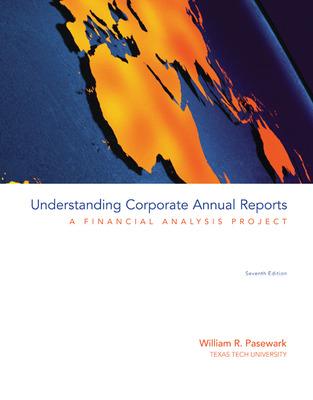Question
Chapter V: Revaluation 1. Under IFRS, how is the account revaluation surplus reported? a. As other revenues and expenses on the income statement. b. As
Chapter V: Revaluation
1. Under IFRS, how is the account revaluation surplus reported?
a. As "other revenues and expenses" on the income statement.
b. As part of other comprehensive income which can be reported presented in separate
statement, combined with income statement, or in changes in stockholders' equity statement.
c. It is included with Reserves in the stockholders' equity section of the Statement of Financial Position.
d. The account is not reported in the financial statements.
2. Simpson Company applies revaluation accounting to plant assets with a carrying value of P800,000, a useful
life of 4 years, and no salvage value. Depreciation is calculated on the straight-line basis. At the end of year
1, independent appraisers determine that the asset has a fair value of P750,000.
Question 1: The journal entry to record depreciation for year one will include a
a. debit to Accumulated Depreciation for P200,000.
b. debit to Depreciation Expense for P50,000.
c. credit to Accumulated Depreciation for P50,000.
d. debit to Depreciation Expense for P200,000.
Question 2: The journal entry to adjust the plant assets to fair value and record revaluation surplus in year
one will include a
a. debit to Accumulated Depreciation for P50,000.
b. credit to Depreciation Expense for P150,000.
c. credit to Plant Assets for P150,000.
d. credit to Revaluation Surplus for P150,000.
Question 3: The financial statements for year one will include the following information
a. Accumulated depreciation P200,000.
b. Depreciation expense P50,000.
c. Plant assets P750,000.
d. Revaluation surplus P50,000.
Question 4: The entry to record depreciation for this same asset in year two will include a
a. debit to Accumulated Depreciation for P200,000.
b. debit to Depreciation Expense for P250,000.
c. credit to Accumulated Depreciation for P150,000.
d. debit to Depreciation Expense for P200,000.
VI: Disposal
1. A plant asset with a five-year estimated useful life and no residual value is sold at the end of the second year
of its useful life. How would using the sum-of-the-years'-digits method of depreciation instead of the doubledeclining balance method of depreciation affect a gain or loss on the sale of the plant asset?
Gain Loss
a. Decrease Decrease
b. Decrease Increase
c. Increase Decrease
d. Increase Increase
2. On January 1, 2013, Mill Corporation purchased for P152,000, equipment having a useful life of ten years and
an estimated salvage value of P8,000. Mill has recorded monthly depreciation of the equipment on the
straight-line method. On December 31, 2021, the equipment was sold for P28,000. As a result of this sale,
Mill should recognize a gain of
a. P0 c. P13,600
b. P5,600 d. P28,000
Step by Step Solution
There are 3 Steps involved in it
Step: 1

Get Instant Access to Expert-Tailored Solutions
See step-by-step solutions with expert insights and AI powered tools for academic success
Step: 2

Step: 3

Ace Your Homework with AI
Get the answers you need in no time with our AI-driven, step-by-step assistance
Get Started


